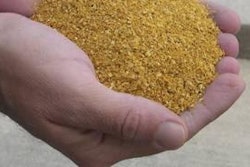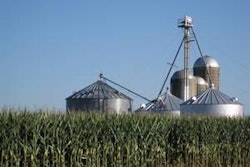West Liberty Foods LLC recently installed a high pressure pasteurization system in its Mount Pleasant, Iowa, slicing facility. An 8,400 square foot expansion is being added to the company’s Tremonton, Utah, facility to accommodate a high pressure pasteurization system that will be installed in February of 2013.
High pressure pasteurization is a non‐thermal process that can reduce microbial counts in food products by two logs or more depending on the pressure used and the amount of time the pressure is maintained. This process uses water under very high hydrostatic pressure, as high as 87,000 pounds per square inch for a period ranging from seconds to as much as three minutes, which destroys harmful food bacteria while maintaining flavor and nutritional value.
Clean label option
Ed Garrett, president and CEO, West Liberty Foods, said, “Customer focus is one of our main priorities, and through this system we are able to offer a clean label product without compromising ingredients, taste, or food safety.” Gerald Lessard, vice president and COO, West Liberty Foods, said that with the use of high pressure pasteurization, products can be formulated with no or lower levels of inhibitors and still qualify for Category I status.
West Liberty Foods operates a turkey slaughter and deboning operation in addition to its cooking and slicing capabilities. In addition to turkey, the company cooks and slices other proteins for foodservice and retail customers. Lessard said, “Our design criteria [for high pressure pasteurization] will allow the equipment to be used across all proteins.”
When asked about the impact of high pressure pasteurization on product packaging choices, Lessard didn't anticipate any changes: “Our testing would indicate that we will not need to change the packaging films. Issues have been identified by others that would lead to the conclusion that the film was not adequately structured to withstand the high pressure pasteurization process. Our vendor has assured us that this will not be the case with the equipment that we have purchased.”
Lessard wouldn't give an estimate of what customers could expect high pressure processing to cost, but he explained why the process isn't inexpensive. “No doubt it is an expensive process. The technology has not advanced to where large scale production can be processed at the same pace that it is produced. The small batch size requires more high pressure pasteurization vessels to adequately process what a mid- or large-scale production line can produce. This raises the capital investment, which in turn needs to be recovered. There are trade-offs in the final cost of the product that a customer may consider, such as lower inclusion levels of inhibitors resulting in a cleaner label and possibly a higher margin on their product.”
Lessard explained that West Liberty’s customers will now have a choice between using product formulation and high pressure pasteurization to achieve Category I status with their products. There are “several organic acids that are being used as inhibitors, but these will not provide the same shelf life as product that is high pressure pasteurized."
Niche market or mainstream?
Will the high pressure pasteurization of sliced products be for niche market items or for mainstream products? Lessard wouldn’t hazard a guess. He said, “This will be dictated by our customers and the products that we produce for them. West Liberty Foods already has advanced food safety through the use of our clean room technology. The installation of high pressure pasteurization will increase our flexibility to provide additional options to our customers and their brands to ensure the safest food possible.”

















